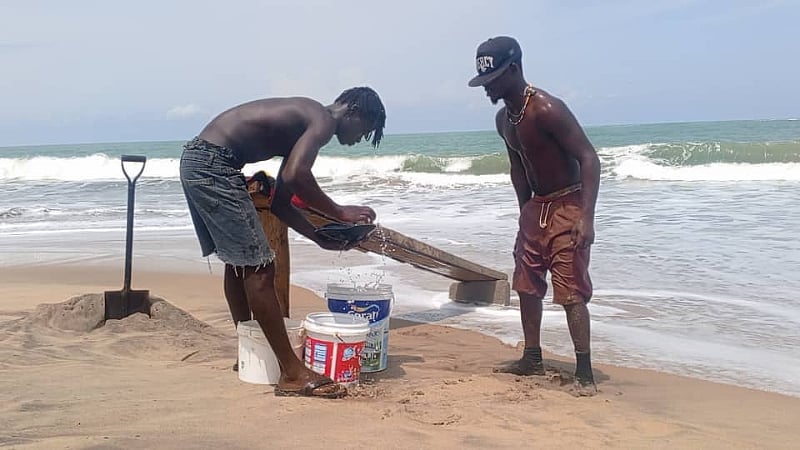The coastal town of Brenu Akyinim, once a tranquil haven known for its tourist attractions, has fallen victim to the pervasive grip of illegal mining, locally known as “galamsey.” This illicit activity has ensnared the community’s youth, luring them away from education with the promise of quick riches, transforming a peaceful fishing village into a chaotic mining hub. The devastating consequences of this shift are evident in the local school, where nearly all the male BECE candidates secretly engage in galamsey, while their female counterparts support the operation by fetching water for a fee. This nocturnal cycle of labor disrupts their education, leaving them exhausted and unable to focus during school hours, jeopardizing their future and the community’s overall well-being.
The lure of immediate financial gain is a powerful motivator for these children, many of whom come from impoverished families. They see galamsey as a means to provide for their families and escape the cycle of poverty, believing that the quick money earned through mining outweighs the long-term benefits of education. This perception is reinforced by the stories of unemployed graduates, further diminishing the perceived value of formal education. Some students express a sense of pride in their ability to contribute financially to their families, even as they acknowledge the detrimental effects of sleep deprivation on their academic performance. This desperate situation highlights the complex interplay of poverty, parental pressure, and the allure of quick money that fuels the galamsey crisis.
The headteacher of the local school paints a grim picture of the situation, lamenting the sharp decline in attendance and academic performance, particularly among the boys. He observes that the students are increasingly money-driven and indifferent to their education, prioritizing their nightly mining activities over their studies. This shift in priorities is not only affecting their academic prospects but also eroding the social fabric of the community. The headteacher attributes this alarming trend to a combination of parental neglect, poverty, and the perceived lack of employment opportunities after completing school. He underscores the urgency of addressing this issue before it irrevocably damages the future of these children and the community as a whole.
The devastating impact of galamsey extends beyond the classroom, posing serious health and environmental risks to the entire community. The close proximity of mining operations to the local CHPS compound threatens the structural integrity of the health center, putting the health and safety of both patients and staff at risk. Furthermore, the contamination of local water sources with mercury and arsenic, used in gold extraction, poses a significant threat to public health, potentially leading to waterborne diseases and long-term health problems. The rampant destruction of the beachfront caused by mining activities has also led to inland tidal erosion, collapsing buildings, and the displacement of residents, further exacerbating the community’s challenges.
Parents, caught between the need to provide for their families and the desire for their children to receive an education, often find themselves complicit in this destructive cycle. Some parents acknowledge their reliance on the income generated by their children’s mining activities, justifying their decision by emphasizing the immediate need for survival. This desperate situation highlights the difficult choices faced by families struggling with poverty and the perceived lack of alternative opportunities. While recognizing the dangers and illegality of galamsey, these parents feel compelled to prioritize their children’s immediate needs over their long-term educational prospects, perpetuating the cycle of poverty and undermining the community’s future.
Addressing the complex issue of child involvement in galamsey requires a multifaceted approach involving community sensitization, parental education, and collaborative efforts between various stakeholders. Raising awareness about the long-term benefits of education and the dangers of illegal mining is crucial to changing community perceptions and encouraging parents to prioritize their children’s education. Providing alternative pathways to employment through vocational training programs can also offer hope and opportunities for youth struggling with academic challenges. Strengthening law enforcement efforts to prevent child labor in mining, coupled with providing viable economic alternatives and addressing the underlying causes of poverty, are essential steps towards breaking this destructive cycle and securing a brighter future for the children of Brenu Akyinim. Only through a concerted and comprehensive effort can this community reclaim its future and ensure that its children are not robbed of their potential by the allure of gold.













